Figure 1.
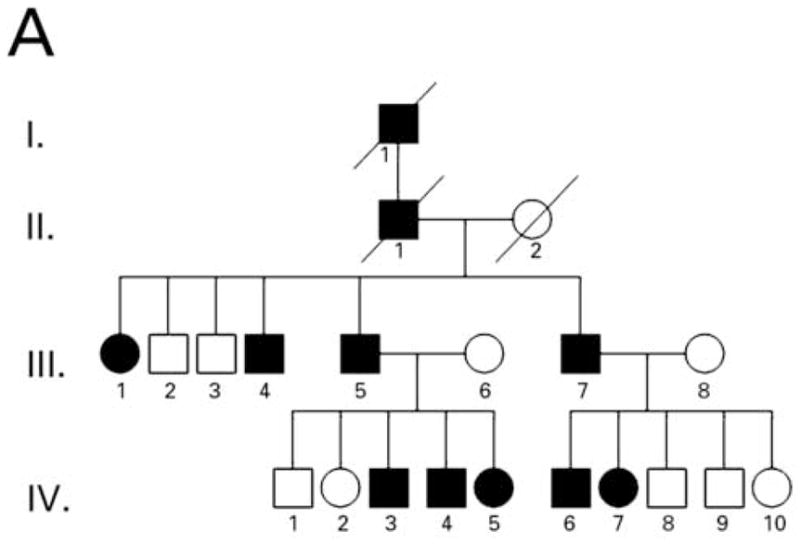
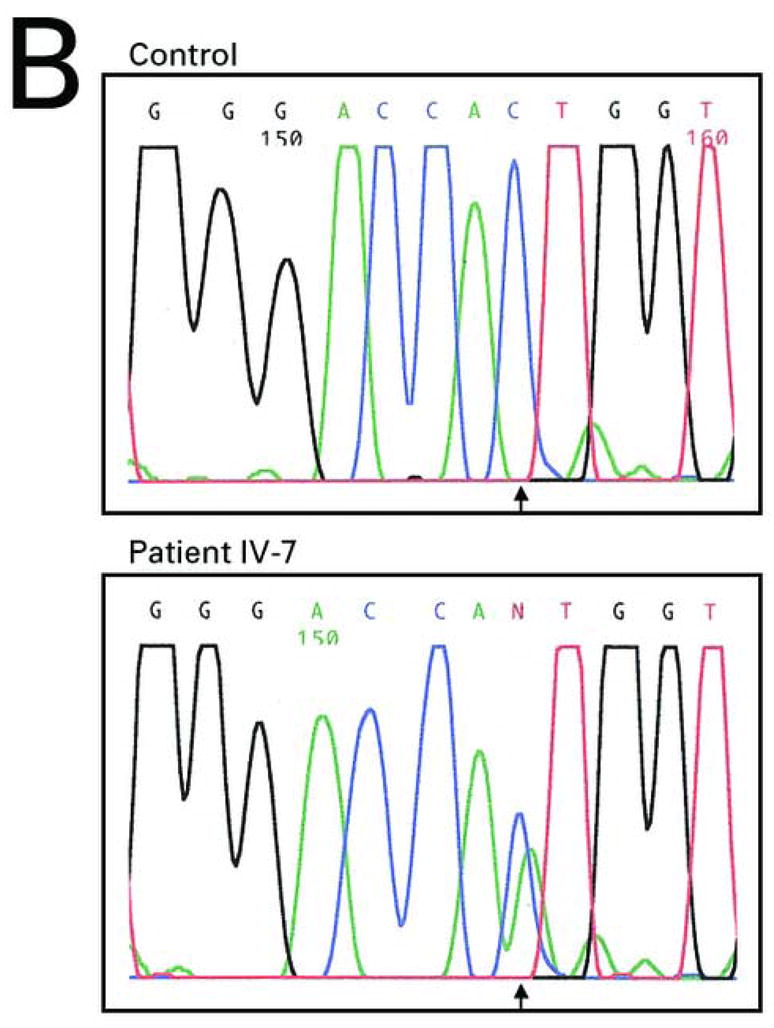
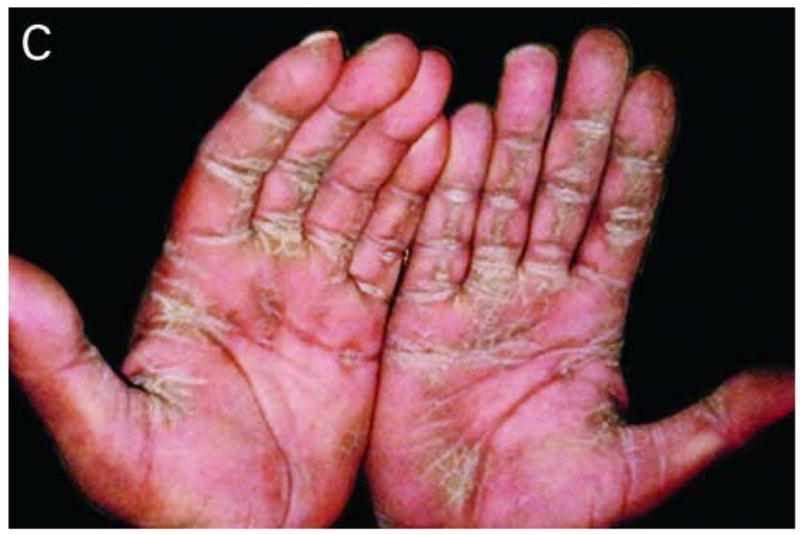
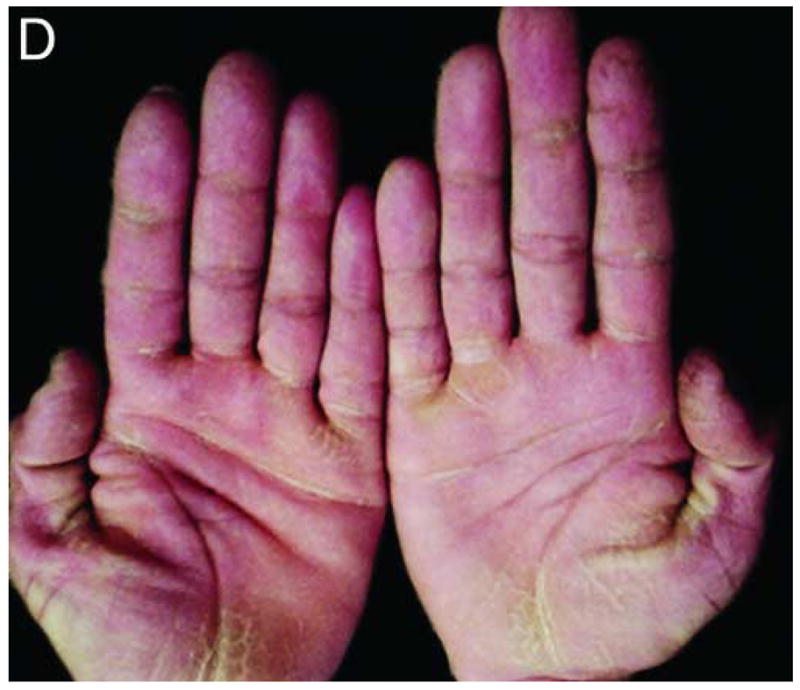
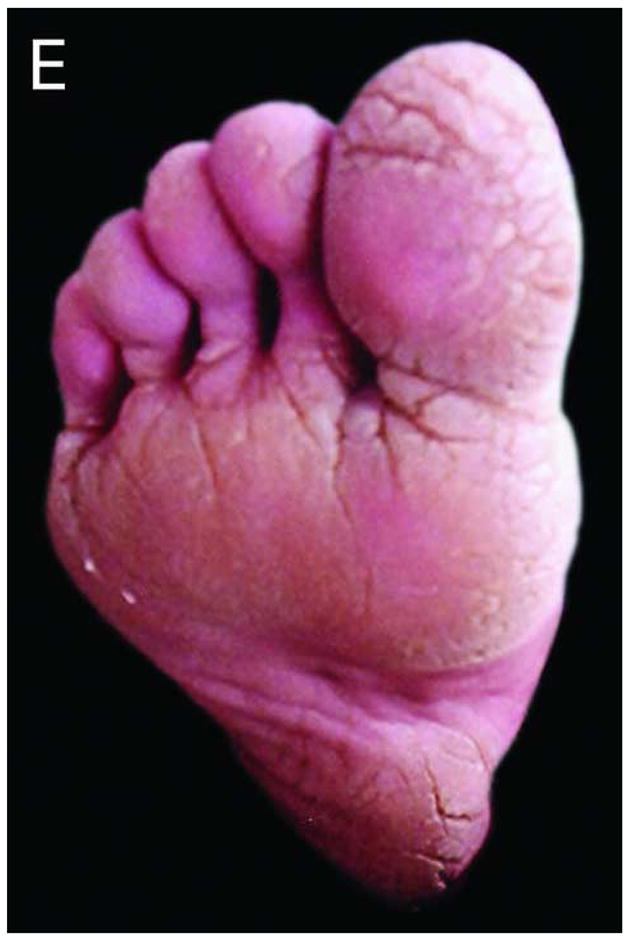
Pedigree, sequence analysis, and clinical features of PKKS family. A) Pedigree reveals autosomal dominant inheritance with 11 affected members in 4 generations. Filled circles and squares represent affected females and males respectively. B) Sequence analysis of intron 11 of an affected individual (IV-7) and control. The arrows indicate the heterozygous G-to-T transversion in the 3′-splice acceptor site of intron 11 of the DSG1 gene. The sequence is shown in reverse orientation (antisense strand). C–E) Clinical presentation of focal hyperkeratosis on the toes, ball, and heel of the foot of an affected individual. Clinical presentation of hyperkeratosis on the palms of the hands, most prominently in creases of the palm, and in linear streaks along the flexor aspect of the fingers of two affected individuals.
